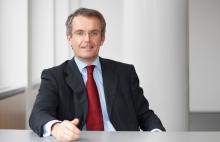In its results for the first quarter of 2018
In Q1, the sales volumes of the group’s building materials developed very differently. While sales volumes in Europe and North America were impaired by a long winter and a reduced number of working days, some emerging countries recorded considerable increases.
The group’s cement and clinker sales volumes rose by 2% to 28.2 million tonnes (previous year: 27.5), and declining sales volumes in Europe and North America were more than offset by significant growth in Asia-Pacific and Africa-Eastern Mediterranean Basin. In Asia, particularly Indonesia and India contributed strongly to this growth. In Africa, substantial increases in sales volumes were recorded in Egypt, Ghana, and Tanzania.
Deliveries of aggregates fell by 2% to 59.5 million tonnes (previous year: 60.9). Strong growth in Asia-Pacific did not fully compensate for the weather-related decline in sales volumes in Europe and North America.
Deliveries of ready-mixed concrete also decreased by 2% to 10.2 million m³ (previous year: 10.4) because of the adverse weather conditions. In contrast, asphalt sales volumes improved considerably by 11% to 1.6 million tonnes (previous year: 1.5) owing to the positive development of demand in California and consolidation effects in the northwest of the USA. Excluding consolidation effects, the increase amounted to 2%.
Group revenue fell by 4% in the first quarter to €3.6 billion (previous year: 3.8), with negative currency effects of €-264 million having an adverse impact on revenue. Adjusted for currency and consolidation effects, revenue increased by 2%, says HeidelbergCement.
The long winter in North America and Europe and the reduced number of working days impaired sales volumes and revenue as well as the result from current operations before and after depreciation and amortisation. In addition, energy costs rose noticeably due to a low starting point in the same quarter of the previous year.
The group says that base effect will level off considerably in the coming quarters. In addition, price increases, which have been announced in many markets, will become visible in the second quarter.
Result from current operations before depreciation and amortisation decreased by 34% to €252 million (previous year: €383).
After depreciation and amortisation, the result from current operations fell to €-16 million (previous year: 108). Adjusted for currency and consolidation effects, the decrease in the result from current operations before depreciation and amortisation amounted to €88 million.
“HeidelbergCement generated a profit in the seasonally weak first-quarter and despite difficult weather conditions,” says Dr Bernd Scheifele, chairman of the managing board.
“Our successful management of the portfolio and financial result more than compensated for the weather-related decline in operating result. With the positive underlying market dynamics, we’re confident that we can significantly increase our operational performance in the coming quarters and we remain committed to our goals for the financial year.”
The additional ordinary result rose by €134 million to €118 million (previous year: -16). This was mainly due to gains from the sale of the sand-lime brick operating line in Germany and the white cement business in the USA as part of the ongoing portfolio optimisation.
The financial result improved by €7 million to €-75 million (previous year: -82). Net interest expenses were reduced by a further €6 million. Expenses for income taxes decreased to €17 million (previous year: €48).
This results in a profit for the period of €6 million, compared with a loss of €35 million in the previous year’s first-quarter, which is typically weak because of seasonal factors. The profit relating to non-controlling interests fell by €6 million to €29 million (previous year: €35). The group share consequently improved by €47 million to €-23 million (previous year: €-70).
“With the positive underlying market dynamics, we’re confident about 2018,” says Dr Scheifele.
“The outlook for the global economy is positive. Nevertheless, major macroeconomic and particularly geopolitical risks still exist.
“HeidelbergCement is globally well positioned for sustainable and profitable growth. We are on track to meet our strategic goals: to achieve continuous growth, create long-term value for our shareholders, and safeguard high-quality jobs.”





